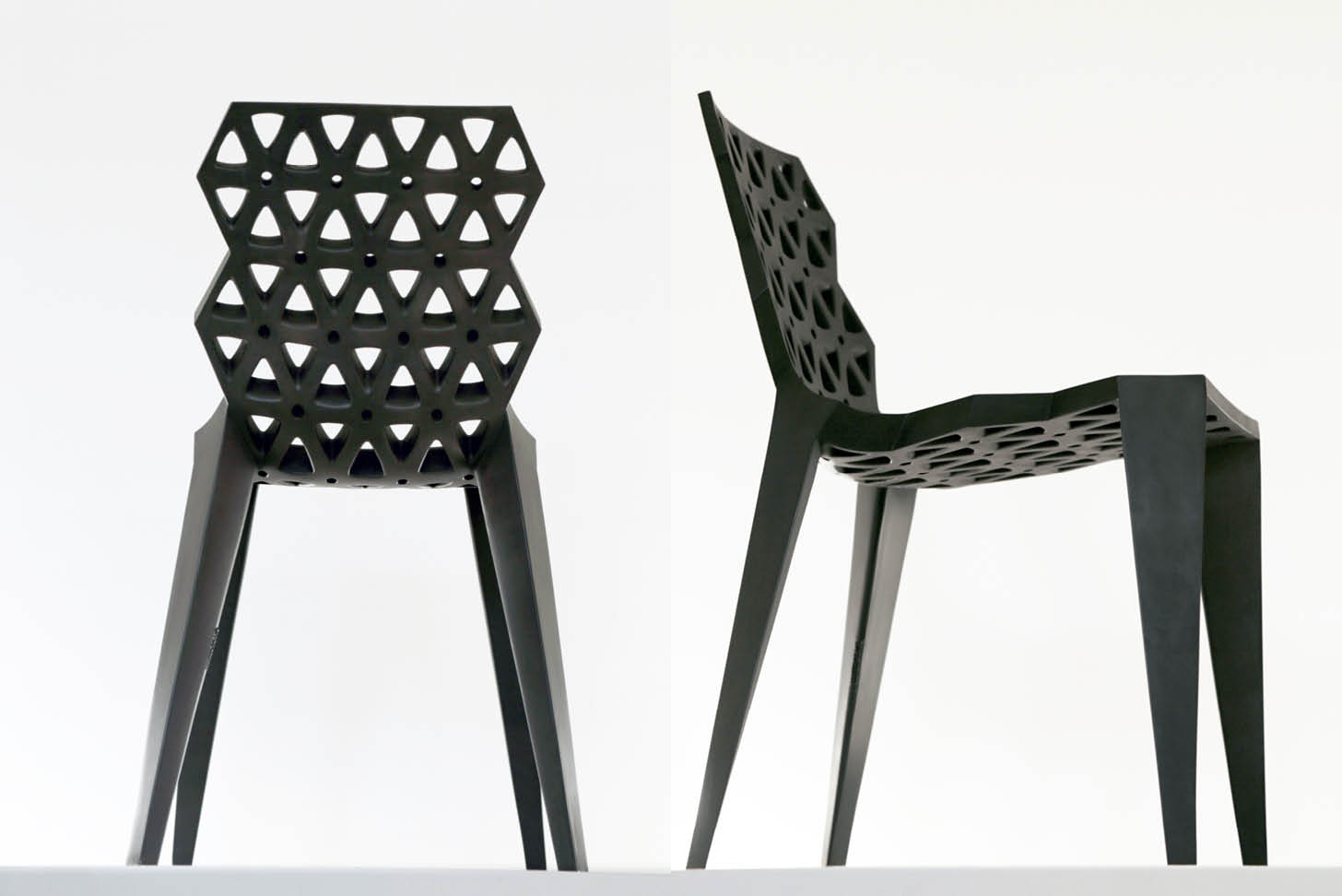In 2001, the Sinterchair by Vogt+Weizenegger was the first chair to be produced from polyamide powder using the Selective Laser Sintering (SLS®) process. At the time, it was revolutionary to 3D print an object of this size.
In 2017, Oliver Vogt had the idea to have the Sinterchair V, which belongs to the collection of the Vitra Museum, produced as a variant in bronze. I was enthusiastic about the concept and supported his project by commissioning the Sinterchair in bronze for my collection, enabling the production to start at the Flierl art foundry later that year.
Oliver Vogt kindly documented the production in pictures. So you can follow the manufacturing process and get an idea of the effort behind its production.
First, the Sinterchair has to be printed again using the SLS® process. To produce the bronze version, a negative mold is made of silicone and plaster. A wax model is then cast from this. To create the mould for the bronze, the wax model is covered with liquid fireclay, which then hardens. The resulting mold is heated, and the wax is melted out in the “lost wax process.” The bronze is then poured into the hollow mold. After cooling for several days, the metal casting is released from the mold and cleaned with high water pressure. The chaser then processes and refines the raw casting to perfection. To apply the black patina, the bronze must be heated with a gas burner. Finally, the chair is given a silky matt wax sealing. That way, the former polyamide lightweight becomes a metal seat sculpture weighing over 35 kilograms.
Oliver Vogt intended to produce the Sinterchair in bronze as a small series. But since the effort was much greater than planned, my copy will probably remain a unique specimen.






























